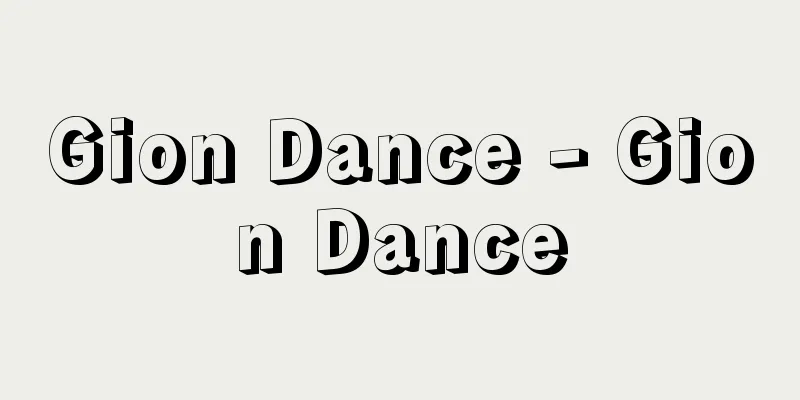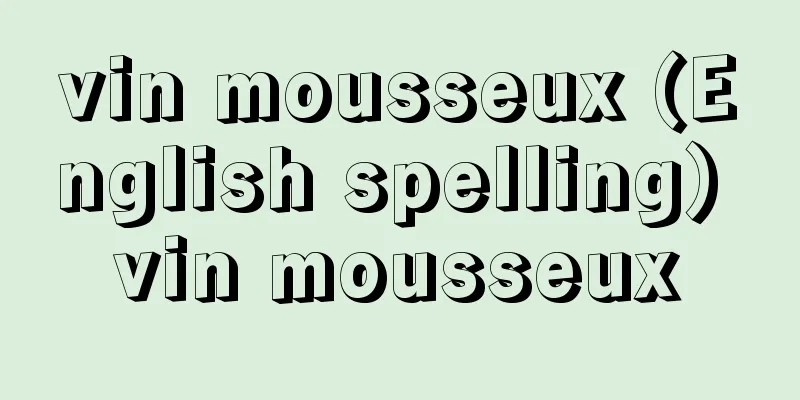British Theatre

|
During the reigns of the two Elizabethan queens, British theater experienced periods of growth that influenced the course of world theater history. One of these periods was the flowering of Renaissance (Elizabethan) theater, which peaked with William Shakespeare from the end of the 16th century to the beginning of the 17th century, and its influence later spread from Europe and the United States to all parts of the world. The other period was the modern theater innovation movement that began in the late 1950s. Although it did not reach the dazzling achievements mentioned above in terms of quality, the new theatrical waves that arose from this movement quickly spread throughout the world and were enthusiastically embraced by young people who were looking for a way to express themselves. These two periods of theater growth were periods when the fixed British society was becoming fluid, and when European civilization was entering a period of change. [Nakano Satoshi and Ooba Kenji] Medieval theatreThe long history of medieval drama, in which the seeds were gradually cultivated, led to the blossoming of Elizabethan drama. As in other European countries, medieval drama in England began when the Catholic Church incorporated light theatrical elements into prayers for the purpose of edifying the people. As the scale of the drama grew and the location moved from inside churches to outside temple grounds and then to town and village squares, the performers changed from monks to ordinary people, and by the time the long "sacred history cycles" based on professional guilds were born, theater had completely taken root in the lives of the English people as an integral part of the entertainment and festivals of the people. Even today, sacred history plays are often performed using scripts from the 14th and 15th centuries that still remain in York and other places. Meanwhile, in the late Middle Ages, "morality plays" began to be performed, in which virtues, vices, or abstract concepts were personified. The most famous is the anonymous Everyman, which tells a simple and well-structured story of a "man" who is suddenly asked to settle his life, realizing that the wealth and friends he had previously held dear are unreliable and that only faith can save him, and who then calmly dies. Morality plays gradually began to incorporate secular themes and less allegorical content that could not be contained within the framework, and after a group of works known as the Interludes, they became the forerunners of Elizabethan drama, but their characteristics remain in works such as Shakespeare in his heyday. However, no matter how much morality plays and mythological plays were able to gather the theatrical energy of the people, they were not enough by themselves to produce Elizabethan drama; the Renaissance literature of advanced cultural countries such as Italy, and through that, the classical literary traditions of faraway Greece and Rome, were needed to serve as the mother of the drama that was most in demand at the time. [Nakano Satoshi and Ooba Kenji] Elizabethan TheatreElizabethan drama learned its style from ancient Roman playwrights such as Seneca, Plautus, and Terence, and sought its material from medieval romances and legends. It was expressed in blank verse, as seen in Gorboduck (1562), said to be the first tragedy in England. Elizabethan drama had a magnificent beginning with the appearance of playwrights called "University Wits". They were all graduates of Cambridge or Oxford University. John Lyly wrote court plays in elegant prose based on classical mythology, George Peele and Robert Greene wrote romantic plots with realistic backgrounds, Thomas Kyd wrote The Spanish Tragedy (1589?), and Christopher Marlowe wrote full-scale tragedies unique to England in Tamburlaine the Great (1587) and Doctor Faustus (1592). Marlowe also contributed greatly to establishing blank verse on the English stage. Shakespeare was the next to reach the pinnacle of these writers and perfected the Elizabethan drama. The approximately 40 plays he wrote during his twenty-odd years as a playwright depict the path that English Renaissance drama was destined to follow. His ten historical plays, beginning with "Henry VI" (1590?), which depicted the history of the Middle Ages in a continuous sequence, are inconceivable without taking into account the national consciousness of the English people that was heightened under the absolute Tudor monarchy, and his comedies, such as "A Midsummer Night's Dream" (1595?), which are unique in the history of world theater, were a kind of English crystallization of classical comedy and medieval romance. The freedom and solitude of humans separated from God are most sharply and vividly depicted in tragedies, and following in the footsteps of Kyd and Marlowe, he explored the depths of the human soul in tragedies such as "Hamlet" (1601?). Of course, Shakespeare was not the only one who supported the theater of that time. It goes without saying that many playwrights, including his rival in comedy, Ben Jonson, Thomas Decker, who wrote The Shoemaker's Holiday (1599), and Thomas Heywood, known for The Woman Killed with Tenderness (1603), played a part in the unprecedented prosperity of theater. Around 1610, when Shakespeare retired, Elizabethan theater went from its heyday to a period of decadence. After leaving behind masterpieces such as John Webster's The Duchess of Malphy (1614) and a tragicomedy co-written by Francis Beaumont and John Fletcher, the light of Elizabethan theater was eventually extinguished with the closure of theaters due to the Puritan Revolution in 1642. [Nakano Satoshi and Ooba Kenji] Restoration theatreWhen theatrical activities resumed with the Restoration in 1660, British theater had begun to change its appearance under the influence of French classical theater. In the newly built theaters, the characteristic stage of Elizabethan theaters, which had been a large protruding stage on a flat floor and surrounded by seating on three sides, was set back and became a so-called apron stage, and eventually moved towards a proscenium stage like other European countries. Instead of relying on the evocative effect of the lines themselves, there was a growing tendency to rely more on lighting, set and music, and the theater as a whole was changing from a theater that was "listened to" to a theater that was "watched," and actresses also appeared. The audience, consisting mainly of upper society such as courtiers, welcomed comedies of manners such as William Wycherley's The Country Wife (1675), which combined witty rhetoric between men and women with romantic bargaining, and heroic tragedies such as John Dryden's The Conquest of Granada (1670), which depicted superhuman characters and exaggerated expressions. [Nakano Satoshi and Ooba Kenji] Theatre of the 18th and 19th centuriesThe protagonist of tragedy soon changed from a hero to a woman, and plays such as Nicholas Roe's Jane Shore (1714) brought tears to people's eyes, but in comedies, the middle-class citizens who had become the new center of audiences preferred sentimental comedies that praised everyday morality. From the 18th century to the 19th century, theatrical activity flourished in terms of performances, and the two major theaters in London, Drury Lane and Covent Garden, were repeatedly expanded to accommodate 3,000 people, but in inverse proportion to this, the quality of performances became coarse and original plays declined, with only the comedies of Oliver Goldsmith and Richard Brinsley Sheridan supporting the tradition. Shakespeare was the foundation of this vibrant stage activity, and while his works had mostly been performed in the form of adaptations since the Restoration, from the mid-18th century they gradually began to be performed in their original form, with such great actors as David Garrick, John Philip Kemble, and Edmund Kean playing key roles. In the 19th century, when Romantic poets such as George Gordon Byron and Percy Bysshe Shelley wrote verse dramas to be read aloud rather than performed, they also followed the Elizabethan playwrights as their models. [Nakano Satoshi and Ooba Kenji] The Establishment of Modern Drama and Its Subsequent StagesIn the theater, melodramas and comedies that relied on exaggerated emotional expressions entertained audiences, but from the second half of the 19th century, Thomas William Robertson (1829-1871) began to write works that dealt realistically with social issues, starting with Society (1865) and Classes (1867). This trend intensified when William Archer introduced Henrik Ibsen. George Bernard Shaw, an admirer of Ibsen, produced unique problem plays in which characters engage in lengthy discussions with a mixture of wit and satire in Man and Overman (1905) and many other works, and John Galsworthy also produced problem plays. Ibsen and Shaw's works were staged by Jacob Glyne's Independent Theatre (founded in 1891) and directed by Harley Granville Barker and others, promoting the modern drama movement in Britain and influencing the Irish national drama movement. Gordon Craig's anti-naturalistic stage design also influenced European countries. Meanwhile, Oscar Wilde brilliantly revived the tradition of comedy of manners in his The Importance of Being Earnest (1895), and was followed by James Matthew Barrie and others. Between the two world wars and for the decade thereafter, the theatrical scene was dominated by realistic drawing-room comedies by Noël Coward and Terence Rattigan, and a revival of verse drama by Thomas S. Eliot and Christopher Fry. [Nakano Satoshi and Ooba Kenji] Innovation in Contemporary TheatreAbout ten years after the end of the Second World War, as if pent-up energy seeking a new outlet had erupted, a rebellion against traditional theater began. Starting with John Osborne's Look Back in Anger, which opened at the Royal Court Theatre on May 8, 1956, a new generation of writers, collectively known as the "Angry Young Men," began to produce works one after another. These works were a riot of styles and content, including absurdist, epic, realistic, and comedic, but they all shared one thing in common: they were not bound by established theater styles. This commonality elevated their activities to a cultural phenomenon that transcended the boundaries of theater. Many of these writers are familiar to Japanese people, such as Arnold Wesker, John Arden, and Sheila Delaney, but it is Harold Pinter who has remained one of the world's leading writers from that time to the present. Having established his reputation with his early works, beginning with Room (1957), he continued to stimulate the theatrical world with works such as Coming Home (1965) and Betrayal (1978). After the great wave of the 1950s passed, the second wave of playwrights, including Peter Shaffer, Edward Bond, Joe Orton (1933-1967), Christopher Hampton (1946-), Tom Stoppard, and David Storey, continued to flourish, but Stoppard, who placed theatrical fiction at the center of his plays, undoubtedly led one direction of British theater in the second half of the 20th century. As comedy began to dominate the theatre in the 1970s, Alan Ayckbourn (1939- ) became particularly successful, and political radicals such as Trevor Griffiths (1935- ), Howard Brenton (1942- ), and David Hare (1947- ) also became active. In terms of performances, the British theatrical world today is still centered on commercial theaters in London's West End, but since the Second World War, many repertory theaters that operate with subsidies from local governments have absorbed the energy of theatrical innovation. In particular, two major theater companies that receive huge subsidies through the Arts Council have been carrying out activities that have attracted worldwide attention. One is the Royal Shakespeare Company, led by directors Peter Brook, Peter Hall, Trevor Nunn (1940-), Terry Hands (1941-2020), and Adrian Noble (1950-), and the other is the National Theatre, which was taken over from Laurence Olivier to Hall, Richard Eyre (1943-), and Nunn. [Nakano Satoshi and Ooba Kenji] "Theatre of Anger: A New Wave in British Drama" by J.R. Taylor, translated by Kishi Tetsuo et al. (1975, Kenkyusha)" ▽ "Elizabethan Drama: Tradition and Vision" by Sasayama Takashi (1982, Yamaguchi Shoten)" ▽ "Lecture Series on the History of English and American Literature: Drama I" by Tomihara Yoshiaki and Sasayama Takashi (1987, Taishukan Shoten)" ▽ "Contemporary English and American Playwrights" edited by the Contemporary Drama Research Group (1990, Eichousha Shinsha) ▽ "Lecture Series on the History of English and American Literature: Drama III" by Okumura Saburo, Suga Yasuo, Odashima Yushi, Oba Kenji et al. (1992, Taishukan Shoten)" ▽ "A Wandering Through British Drama: Shakespeare, Pinter, and Others" by Okawachi Yasuyuki (1996, Kindai Bungeisha)" ▽ "Encyclopedia of Medieval and Tudor Theatre in England" edited by Takayoshi Matsuda (1998, Keio University Press) " "Encyclopedia of British and American Theatre" edited by Kazuo Sakamoto and Masami Kuruzumi (1999, Shinsui-sha) [References] | | | | | | | | | | | | | | | | | | | | | | | | | | | | | | | | | | | | National Theatre| | | | | | | | |Brooke| | | | | | | | | | | |Source: Shogakukan Encyclopedia Nipponica About Encyclopedia Nipponica Information | Legend |
|
イギリス演劇は2人のエリザベス女王の時代に、世界演劇史の動向を左右するような高揚を示した。その一つは、16世紀末から17世紀初頭にかけてのウィリアム・シェークスピアを頂点とするルネサンス(エリザベス朝)演劇の開花で、後年その影響は欧米から世界各地に及んだ。もう一つの高揚は、1950年代後半に始まった現代演劇革新の動きで、質的に前記の絢爛(けんらん)たる達成には及ばなかったとしても、ここで生じた新しい演劇の波動はたちまち全世界に伝わって、自己表現の方法を求めていた若者たちに熱狂的に迎え入れられた。この二度の演劇興隆の時期は、固定したイギリスの社会が流動化してきた時期であり、ヨーロッパの文明が変動期に差しかかった時代でもある。 [中野里皓史・大場建治] 中世演劇エリザベス朝演劇の開花に至るには、徐々にその芽が育てられていった長い中世の演劇の歴史があった。ヨーロッパ諸国と同様にイギリスの中世演劇も、カトリック教会が民衆教化を目的として祈祷(きとう)のなかに軽い演劇的要素を取り入れたのが始まりである。やがてその規模が大きくなり、場所も教会堂の中から外の境内へ、さらに町村の広場へと出ていくにつれ、担い手も僧侶(そうりょ)から民衆に交代し、職業組合を制作陣の基盤とする長大な「聖史劇(サイクル)」が誕生するころには、民衆の娯楽や祭典と一体化したものとして演劇は完全にイギリス人の生活に根を下ろした。ヨークその他に現存する14、15世紀の台本を用いて、今日でもしばしば聖史劇の上演が行われている。 一方、中世の後期になると、美徳や悪徳あるいは抽象概念などが擬人化されて登場する「道徳劇(モラリティー)」が上演されるようになった。もっとも有名なのは作者不詳の『人間(エブリマン)』で、突然人生の清算を求められた「人間」が、それまでたいせつだと思っていた富や友人があてにならず、ただ信仰によってのみ救われることを悟り、従容として死につくという物語が簡明に整った構成で描かれている。道徳劇には、しだいにその枠に入りきらないような世俗的主題や寓意(ぐうい)性の薄い内容が盛り込まれるようになり、インタールードInterludeとよばれている作品群を経て、エリザベス朝演劇成立の先駆となるが、その特徴は全盛期のシェークスピアなどにも残っている。しかし、道徳劇や聖史劇がいかに民衆の演劇的エネルギーを集めえたとしても、それだけではエリザベス朝演劇を生み出すには不十分で、当時いちばん求められていた戯曲の母胎たるべく、イタリアなど先進文化国のルネサンス文芸、あるいはそれを通して遠くギリシア・ローマの古典文学の伝統が必要だったのである。 [中野里皓史・大場建治] エリザベス朝演劇その形式はセネカ、プラウトゥス、テレンティウスら古代ローマの劇作家に学び、その素材は中世のロマンスや伝説に求め、その表現はイギリス最初の悲劇といわれる『ゴーボダック』(1562)で試みられた無韻詩(ブランク・バース)をとり、エリザベス朝演劇は「大学出の才子たち(ユニバーシティ・ウィッツ)」とよばれる劇作家たちの登場によって、華麗な幕開きを迎えた。彼らは皆ケンブリッジかオックスフォード大学の出身者で、ジョン・リリーは古典神話を素材に優雅な散文で宮廷用の演劇をつくり、ジョージ・ピールやロバート・グリーンはロマンス風の筋立てを写実的な背景で描き、トマス・キッドは『スペインの悲劇』(1589?)で、クリストファ・マーローは『タンバレン大王』(1587)や『フォースタス博士』(1592)でイギリス独自の本格的悲劇を描き上げた。マーローはまた無韻詩をイギリスの舞台に定着させた功績が大きい。 続いてこれらの作家たちの頂点にたってエリザベス朝演劇を完成させたのは、シェークスピアであった。二十数年間の劇作家活動中に書かれた約40編の戯曲は、イギリス・ルネサンスの演劇がまさにたどるべくしてたどった軌跡を描いているといってよかろう。イギリス中世史を連鎖的に描き上げた『ヘンリー6世』(1590?)以下10編に及ぶ歴史劇は、チューダー絶対王制の下に高揚したイギリス人の国家意識を抜きにしては考えられないし、世界演劇史上でもユニークな『真夏の夜の夢』(1595?)などの喜劇群は、古典喜劇と中世ロマンスのいわばイギリス的結晶であった。神を離れた人間の自由と孤独は、悲劇においてもっとも先鋭かつ鮮明に描かれるが、キッドやマーローの後を受けて彼は『ハムレット』(1601?)以下の悲劇作品で人間の魂の深淵(しんえん)を探った。 もちろんシェークスピア一人が当時の演劇を支えたわけではない。喜劇における彼のライバルであるベン・ジョンソンをはじめ、『靴屋の休日』(1599)を書いたトマス・デッカー、『優しさで殺された女』(1603)などで知られるトマス・ヘイウッドなど多くの劇作家が、未曽有(みぞう)の演劇繁栄の一翼を担ったことはいうまでもない。シェークスピアが引退した1610年ごろから、エリザベス朝演劇は爛熟(らんじゅく)から退廃の時期に入った。ジョン・ウェブスターの『モルフィ公爵夫人』(1614)や、フランシス・ボーモントとジョン・フレッチャーの合作悲喜劇などの傑作を残し、やがて1642年のピューリタン革命による劇場閉鎖に至って、エリザベス朝演劇の灯は消えたのである。 [中野里皓史・大場建治] 王政復古時代の演劇1660年、王政復古とともに演劇活動が再開されたとき、フランスの古典主義演劇の影響などを受けて、イギリス演劇は新しい姿への脱皮を始めていた。新しくつくられた劇場では、従来の平土間に大きく突き出て三方の客席から囲まれていたエリザベス朝劇場の特徴的な舞台は後退して、いわゆるエプロン・ステージ(張出し舞台)程度となり、やがて他のヨーロッパ諸国と同じくプロセニアム・ステージ(額縁舞台)へと向かった。台詞(せりふ)自体のもつ喚情効果にかわって、照明や装置それに音楽に多くを頼る傾向が強くなり、全体としてこれまでの「聞く」芝居から「見る」演劇へと変貌(へんぼう)を遂げつつあり、女優も出現した。宮廷人など上流社会を中核とした観客はウィリアム・ウィッチャリーの『田舎(いなか)女房』(1675)などを代表とする恋のかけひきに男女の機知問答を盛り込んだ風習喜劇(コメディ・オブ・マナーズ)や、ジョン・ドライデンの『グラナダ征服』(1670)などの超人的な品性や誇張した表現で描かれた英雄悲劇を歓迎した。 [中野里皓史・大場建治] 18~19世紀の演劇悲劇の主人公はまもなく英雄から女性に変わり、ニコラス・ローの『ジェーン・ショア』(1714)などが人々の涙を誘ったが、喜劇においても、新しく観客層の中心に座を占めた中産階級の市民たちは日常道徳を称揚する感傷喜劇を好んだ。18世紀から19世紀へ、上演の面でみる限り演劇活動は盛んであり、ロンドンのドルーリー・レーンとコベント・ガーデンの二大劇場も増築を繰り返して3000人を収容できるほどになったが、それに反比例して上演のきめは粗くなり、創作劇の質は落ち、わずかにオリバー・ゴールドスミスやリチャード・ブリンズリー・シェリダンらの喜劇が伝統を支えるのみであった。なお、活発だった上演活動の基盤にあったのはシェークスピアであり、王政復古以来ほとんど翻案の形で上演されてきた彼の作品が、18世紀中葉からしだいに原作によって上演されるようになり、デイビッド・ギャリックやジョン・フィリップ・ケンブル、エドマンド・キーンなどの名優が活躍した。19世紀に入って、ジョージ・ゴードン・バイロンやパーシー・ビッシュ・シェリーなどロマン派の詩人たちが、上演用よりもむしろ朗読用に詩劇をつくったとき、手本にしたのもエリザベス朝の劇作家たちであった。 [中野里皓史・大場建治] 近代劇の成立とその後劇場では誇大な感情表現に頼るメロドラマや笑劇のたぐいが客席をわかせていたが、19世紀後半からトマス・ウィリアム・ロバートソンThomas William Robertson(1829―1871)の『社会』(1865)や『階級』(1867)を先頭に、社会問題を写実的に扱う作品が書かれ始めた。ウィリアム・アーチャーによってヘンリク・イプセンが紹介されるに及んで、その傾向は一段と強まった。イプセンの心酔者であったジョージ・バーナード・ショーは、『人と超人』(1905)ほか多くの作品で、機知と風刺を交えながら登場人物に長々と議論をさせる独得の問題劇を世に送り、ジョン・ゴールズワージーも同じく問題劇を提出した。イプセンやショーの作品は、ジェイコブ・グラインの独立劇場Independent Theatre(1891年創立)や、ハーリー・グランビル・バーカーなどの演出によって上演され、イギリスにおける近代劇運動が推進され、その影響はアイルランドの国民劇運動に及んだ。また、ゴードン・クレイグによる反自然主義的舞台造形もヨーロッパ各国に影響を与えた。一方、オスカー・ワイルドは『真面目(まじめ)が大切』(1895)で、みごとに風習喜劇の伝統を現代によみがえらせ、ジェームズ・マシュー・バリーなどが彼に続いた。 両大戦間とその後10年余りは、ノエル・カワードやテレンス・ラティガンによる写実的な客間喜劇や、トマス・S・エリオットやクリストファー・フライなどによる詩劇の復興などが劇壇の主流を占めた。 [中野里皓史・大場建治] 現代演劇の革新第二次世界大戦が終わって約10年後、新しいはけ口を求めて溜(たま)っていたエネルギーが噴出したかのように、従来の演劇に対する反逆が始まる。1956年5月8日にロイヤル・コート劇場で初日をあけたジョン・オズボーンの『怒りをこめてふり返れ』をきっかけに、「怒れる若者たち」と総称される新しい作家たちが続々と作品を発表し始めた。それらは不条理劇、叙事演劇、写実劇、笑劇などさまざまな形式とさまざまな内容でまさに百花繚乱(りょうらん)の趣(おもむき)があったが、ただ一つ、既成の演劇にとらわれないという点で共通しており、その共通点がこの活動を、演劇の枠を超えた一つの文化現象にまで押し上げたのである。アーノルド・ウェスカー、ジョン・アーデン、シーラ・ディレーニーなど日本になじみのある名前も多いが、当時から今日まで世界の第一線級作家であり続けているのはハロルド・ピンターである。『部屋』(1957)を筆頭に初期の作品で名声を確立した彼は、『帰郷』(1965)、『背信』(1978)などでつねに劇壇に刺激を与えてきた。1950年代の大波が去ったあと、ピーター・シャファー、エドワード・ボンド、ジョー・オートンJoe Orton(1933―1967)、クリストファー・ハンプトンChristopher Hampton(1946― )、トム・ストッパード、デイビッド・ストーリーなど、第二の波とよばれる1960、1970年代の作家を中心に繁栄を続けているが、なかでも演劇の虚構性を劇作の中心に据えたストッパードが20世紀後半のイギリス演劇の一つの方向を確実にリードした。1970年代に入ってから喜劇が主流を占めると、とくにアラン・エイクボーンAlan Ayckbourn(1939― )の活躍が目だっているほか、トレバー・グリフィスTrevor Griffiths(1935― )、ハワード・ブレントンHoward Brenton(1942― )、デイビッド・ヘアDavid Hare(1947― )など政治的急進派の活躍もみられる。 なお、上演の面からいうと、今日におけるイギリス劇界は、相変わらずロンドンの劇場街ウェスト・エンドの商業演劇が中心であるが、第二次世界大戦後は地方自治体から補助を受けて活動している多くのレパートリー劇場が演劇革新のエネルギーを吸収してきた。とくにアーツ・カウンシルArts Councilを通して、膨大な補助を受けている二大劇団が世界的に注目される活動を展開してきている。一つは、演出家ピーター・ブルック、ピーター・ホール、トレーバー・ナンTrevor Nunn(1940― )、テリー・ハンズTerry Hands(1941―2020)、エイドリアン・ノーブルAdrian Noble(1950― )らが指導してきたロイヤル・シェークスピア劇団で、もう一つはローレンス・オリビエからホール、リチャード・エアRichard Eyre(1943― )、ナンに引き継がれたナショナル・シアター(国立劇場)である。 [中野里皓史・大場建治] 『J・R・テイラー著、喜志哲雄ほか訳『怒りの演劇――イギリス演劇の新しい波』(1975・研究社)』▽『笹山隆著『エリザベス朝演劇――伝統とヴィジョン』(1982・山口書店)』▽『冨原芳彰・笹山隆著『講座英米文学史・劇Ⅰ』(1987・大修館書店)』▽『現代演劇研究会編『現代英米の劇作家たち』(1990・英潮社新社)』▽『奥村三郎・菅泰男・小田島雄志・大場建治ほか著『講座英米文学史・劇Ⅲ』(1992・大修館書店)』▽『大河内康行著『イギリス演劇逍遙――シェイクスピア・ピンター・その他』(1996・近代文芸社)』▽『松田隆美編『イギリス中世・チューダー朝演劇事典』(1998・慶応義塾大学出版会)』▽『坂本和男・来住正三編『イギリス・アメリカ演劇事典』(1999・新水社)』 [参照項目] | | | | | | | | | | | | | | | | | | | | | | | | | | | | | | | | | | | | | | | | | | | | | | | | | | | | | | | | | | | | |出典 小学館 日本大百科全書(ニッポニカ)日本大百科全書(ニッポニカ)について 情報 | 凡例 |
Recommend
Nuthatch - Nuthatch
A bird of the passerine family, Sitta (illustratio...
Heliornis fulica (English spelling) Heliornisfulica
...General term for birds of the Heliornithidae f...
Pythium debaryanum (English spelling) Pythiumdebaryanum
…[Tsubaki Keisuke]. . . *Some of the terminology ...
Aries (Aries) - Aries (English spelling)
Abbreviation: Ari. One of the twelve zodiac signs....
Acute heart failure
Initial treatment (Figure 3-2-3) Initial treatment...
"Kaibon Taisou Shigen" - Kaihon Taisou Shigen
...The Yuan Dynasty's "Tetsukou Lu"...
contagium animatum
...If you look closely at the scabies that appear...
Keyboard - kiboudo (English)
A device that has keys for letters, numbers, symb...
Manizales (English spelling)
The capital of Caldas State in central-western Col...
Urnfield Culture - Urnfield Culture
Please see the "Urnenfeld Culture" page...
Culture
...Then, led by the industrialization of society,...
Kusamochi - Kusamochi
A type of mochi confectionery. Mochi made with in...
Whitehorse (English spelling)
The capital of the Yukon Territory, Canada. It is ...
Oyagumaki - Oyagumaki
...In Japan, these two types of kinship organizat...
Tokoname [city] - Tokoname
A city on the west coast of Chita Peninsula, Aichi...









